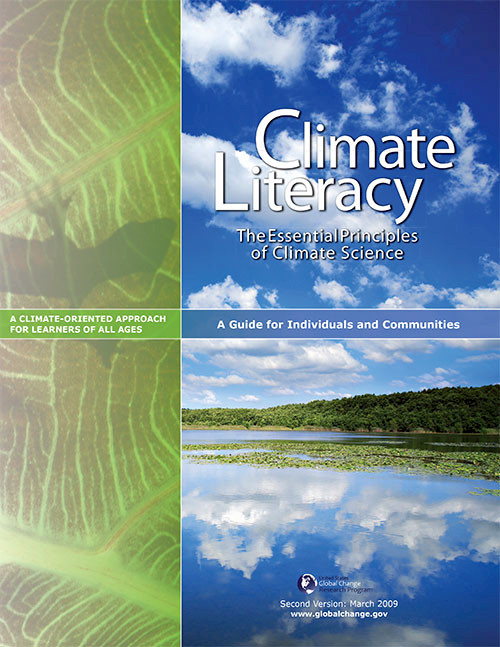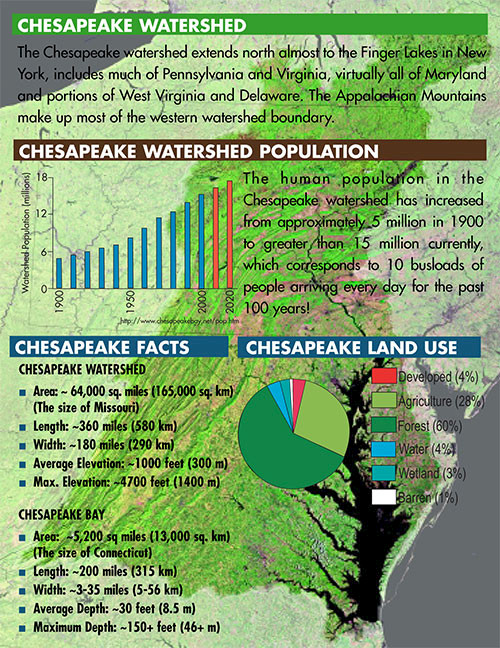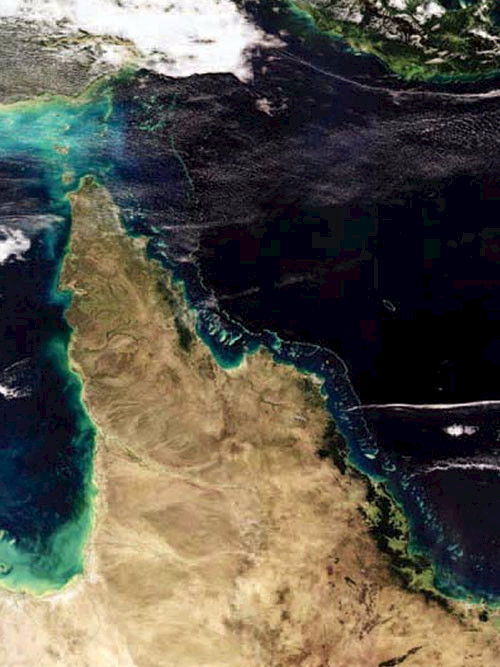Environmental Literacy: Determining the essential elements necessary for understanding a topic or a place
Bill Dennison ·Environmental literacy refers to the most basic information necessary for the broadest understanding of a topic that non-experts need to possess to be conversant about the topic. Just as literacy or numeracy refers to the basic ability necessary to read or perform mathematical tasks, environmental literacy provides the basic ability to make informed environmental decisions.
Distilling copious amounts of information into the essential elements for developing a deep understanding is a challenging task. Sifting through the factoids of information that can be collected for various topics or locations can distract from keying in on what is truly essential to know. Yet, as challenging as the task may be, it can be both rewarding and very useful.
A convenient way to communicate environmental literacy is to break it down into discrete points or principles. Any number of principles can be used, but too few can become too general and too many can be daunting and over-detailed. The environmental literacy exercise developed by the College of Exploration and colleagues to create the Ocean Literacy principles serves as a useful model. The Ocean Literacy project established seven basic principles, each with a series of subsidiary principles that both support the basic principle as well as provide details, examples and illustrations of the basic principle. The basic Ocean Literacy principles are the following: 1) The earth has one big ocean with many features, 2) The ocean and life in the ocean shape the features of earth, 3) The ocean is a major influence on weather and climate, 4) The ocean made earth habitable, 5) The ocean supports a great diversity of life and ecosystems, 6) The ocean and humans are inextricably interconnected, and 7) The ocean is largely unexplored. These seven principles are crafted to convey key messages that are important for everyone to understand about the ocean. This model of using seven literacy principles will be followed in the environmental literacy examples created in this blog series.

Another environmental literacy effort describes climate literacy, "Climate Literacy: The essential principles of climate science". As in the Ocean Literacy effort, seven principles were established: 1) The sun is the primary source of energy for earth's climate system, 2) Climate is regulated by complex interactions among components of the earth system, 3) Life on earth depends on, is shaped by, and affects climate, 4) Climate varies over space and time through both natural and man-made processes, 5) Our understanding of the climate system is improved through observations and theoretical studies, and modeling, 6) Human activities are affecting the climate system, and 7) Climate change will have consequences for the earth system and human lives.

Previous blog posts on this website have established environmental literacy for two iconic ecosystems: Chesapeake Bay and the Great Barrier Reef. The Chesapeake literacy principles were the following: 1) Chesapeake Bay is a large, shallow and productive estuary formed by a drowned river valley, 2) The extensive Chesapeake watershed is connected to the Bay by a myriad of streams and rivers, 3) Chesapeake Bay is particularly vulnerable to runoff of nutrients, sediments and toxicants, 4) Climate change and land use alterations are major drivers for Chesapeake Bay and its watershed, 5) Chesapeake Bay supports unique cultures and livelihoods, 6) American history has been shaped by Chesapeake Bay, and 7) Chesapeake Bay is extremely well studied and intensively managed.

The Great Barrier Reef literacy principles are the following: 1) The Great Barrier Reef is the largest reef complex in the world, 2) The massive catchment of the Great Barrier Reef affects the reef, 3) The Great Barrier Reef has regular, large disturbances, 4) Climate change poses a immediate and real threat to the Great Barrier Reef, 5) The Great Barrier Reef supports indigenous uses, shipping, recreational and commercial fishing and tourism, 6) The Great Barrier Reef supports high biodiversity, including megafauna, and 7) The Great Barrier Reef is managed as a large, contiguous unit.

The first step in distilling environmental information is to establish the basic parameters of the issue - setting the bounds, geographic or conceptual of the environmental issue. Generally, setting the bounds results in the initial environmental literacy principle. The subsequent steps are to establish the general relevance, key features and habitats, the human context and interactions, and the unique aspects of the issue/location. This blog will serve as the initiation of a series of environmental literacy blogs, based on the approach described here.
About the author
Bill Dennison

Dr. Bill Dennison is a Professor of Marine Science and Vice President for Science Application at the University of Maryland Center for Environmental Science.